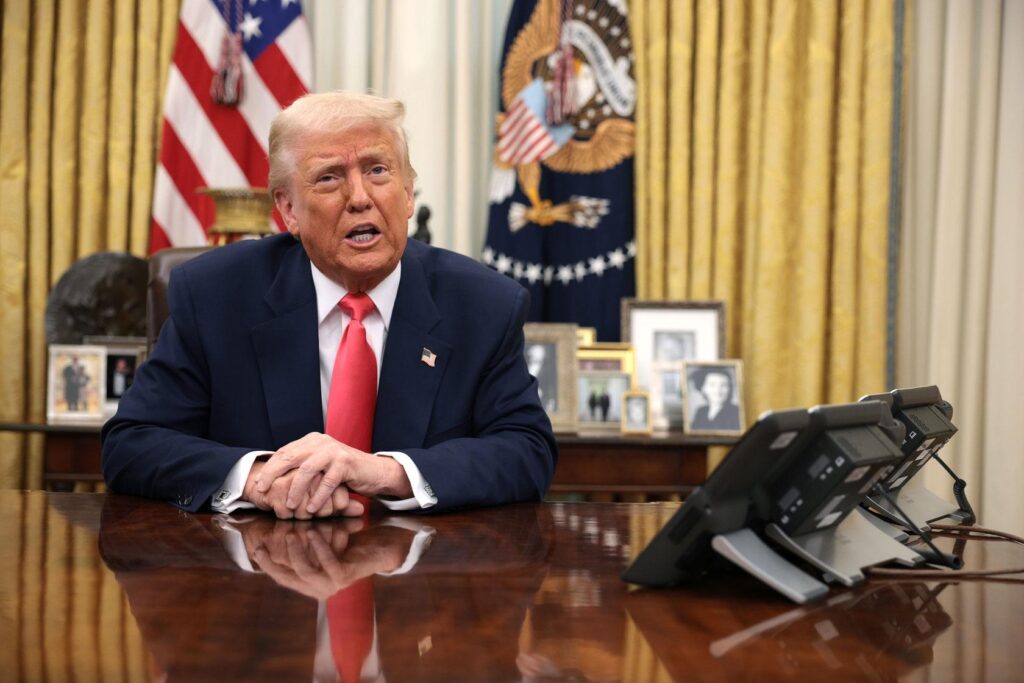In the six months since Donald Trump took office, his administration’s economic policies have begun to leave a significant mark on the U.S. economy. From tax reforms to trade negotiations, various initiatives have sparked both support and controversy across industries and markets. This article explores five key ways in which President Trump’s actions have influenced economic trends and business confidence in the early stages of his tenure, highlighting the impact and implications reported by The Hill.
Trump’s Regulatory Rollbacks and Their Impact on Business Growth
During the first half-year of the Trump administration, the rollback of numerous federal regulations stood out as a pivotal driver for business growth. By targeting rules considered burdensome, especially in industries like energy, finance, and manufacturing, companies found newly expanded opportunities for investment and expansion. Deregulation efforts streamlined approval processes, reducing overhead costs and accelerating project timelines. This wave of policy shifts catalyzed optimism among small and large enterprises alike, with many reporting improved access to capital and a more favorable environment for innovation.
Key sectors felt distinct impacts, as the administration prioritized beating back regulations tied to environmental protections and financial oversight. The table below outlines some major regulatory rollbacks and their corresponding effects on business indicators:
| Regulatory Area | Rollback Action | Business Impact |
|---|---|---|
| Environmental | Revoked Clean Power Plan | Increased coal and oil production |
| Financial | Eased Dodd-Frank rules | Boosted lending to small businesses |
| Manufacturing | Reduced OSHA compliance requirements | Lowered operating costs |
Tax Policy Changes Driving Shifts in Market Investment Patterns
Recent adjustments to tax policies have significantly altered how investors allocate their portfolios, with a noticeable pivot towards sectors that benefit from lowered corporate tax rates and enhanced capital gains incentives. Businesses are increasingly channeling funds into domestic investments, driven by the new tax environment that favors reinvestment and growth within U.S. borders. Key areas witnessing a surge in capital infusion include technology, manufacturing, and energy, as companies seek to maximize the tax advantages linked to equipment purchases and infrastructure projects.
The shifting landscape has also prompted a reassessment of risk profiles across the market. Investors are now prioritizing assets with tax-efficient returns, favoring long-term holdings over short-term speculative trades. Below is a breakdown of investment trends post-policy change, illustrating sectors with increased capital flow:
| Sector | Investment Increase (%) | Primary Driver |
|---|---|---|
| Technology | 18% | R&D Tax Credits |
| Manufacturing | 22% | Equipment Deductions |
| Energy | 15% | Tax Incentives for Infrastructure |
| Financial Services | 10% | Capital Gains Adjustments |
Trade Decisions Reshaping Global Economic Relationships and Domestic Industries
Over the past six months, shifts in trade policies have dramatically altered the landscape of international commerce and domestic manufacturing. Tariff impositions on key imports have prompted several nations to reassess their trade alliances, leading to new bilateral agreements aimed at circumventing American restrictions. This reshuffling has both bolstered certain U.S. industries by reducing foreign competition and triggered supply chain adjustments as businesses seek alternative sourcing strategies. The ripple effects are visible not just in export volumes but also in investment patterns, signaling a more guarded yet opportunistic approach toward global market participation.
Domestically, these trade maneuvers have catalyzed a renewed emphasis on revitalizing manufacturing hubs through policy incentives and recalibrated tax frameworks. Key sectors, such as steel and automotive, have experienced a resurgence thanks to protective measures and increased government spending in infrastructure. However, consumer goods prices have seen modest increases, reflecting the cost of imported materials. Below is a snapshot of impacted sectors and key outcomes:
| Industry | Impact | Notable Outcome |
|---|---|---|
| Steel | Tariff Protection | Manufacturing jobs rose 5% |
| Automotive | Supply Chain Localization | New plants announced in Midwest |
| Consumer Electronics | Import Costs Up | Prices increased ~3% |
| Agriculture | Export Realignment | Shift to new markets in Asia |
To Wrap It Up
As the first half of the year concludes, the economic impact of President Trump’s policies remains a subject of significant analysis and debate. From regulatory changes to shifts in trade dynamics, these five key areas illustrate how his administration has aimed to reshape the economic landscape. Moving forward, economists and policymakers alike will continue to assess the long-term effects of these initiatives on growth, employment, and market stability. The coming months will be crucial in determining whether these changes translate into sustained economic progress or present new challenges for the nation.
